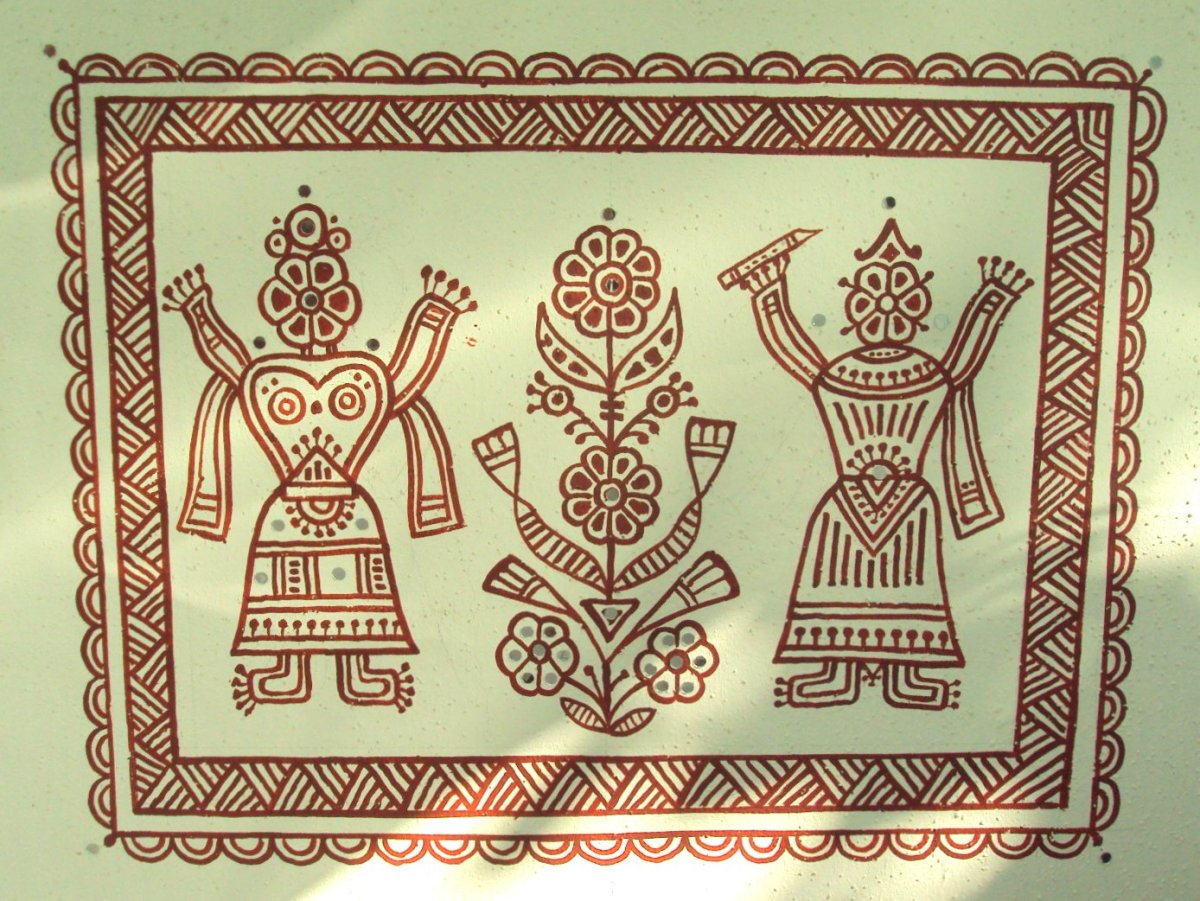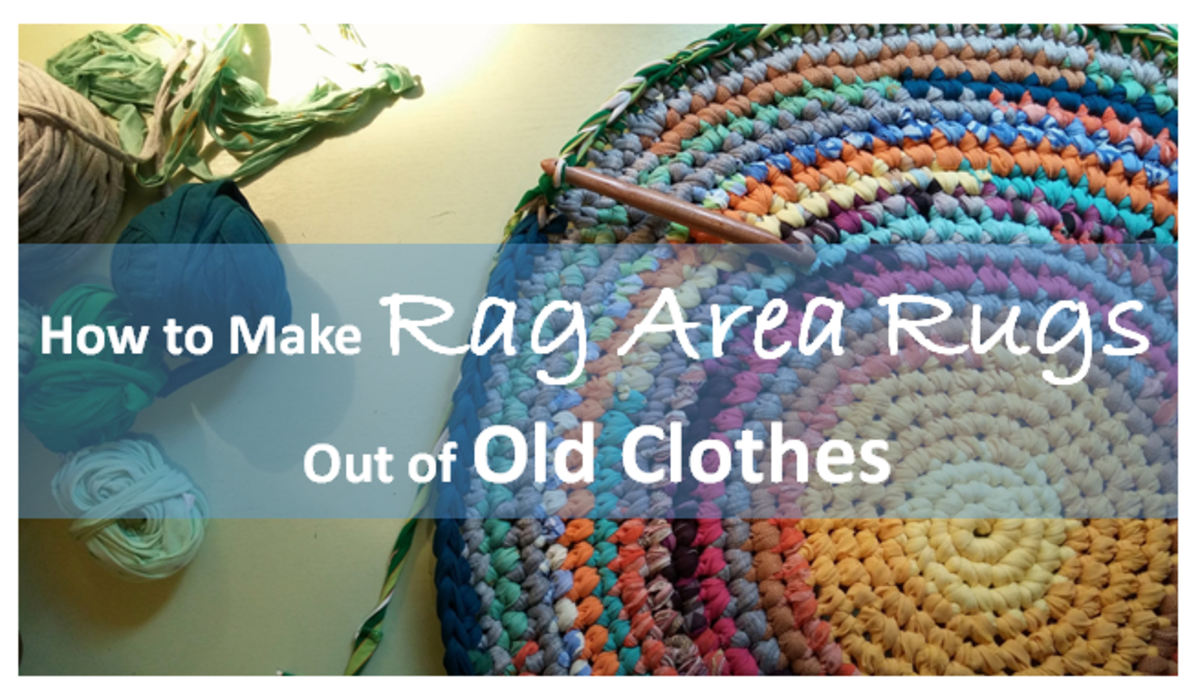Basics in the Language of Art and Design
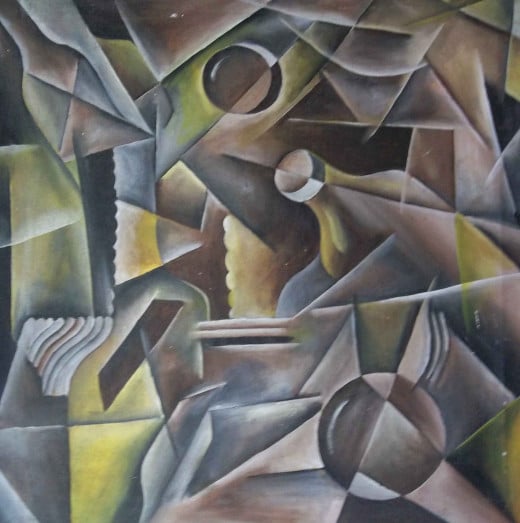
Think of all the art around you – water colour pictures of flower arrangements; oil paintings of scenery, landscapes and portraits; Illistrations in your books, magazines and calendars. Art is everywhere, giving you some company and speaking to you as well. This hub will help to understand how Art communicates.
Art is a language
Art is a universal language and like every language it has principles to govern it just like the grammar in our spoken languages. Again like language, Art is very important to the human species. Janson (1997) puts it very aptly when he says “Humans are the only creatures in the world that can tell one another about imagination in words and pictures.” This “telling … in … pictures” is a form of visual communication. One must have eyes to participate in it. This communication is universal because all people possess the ability to appreciate art, what Janson calls “an artistic faculty.” In this hub, we shall explore how works of art are able to communicate with the viewer.
For an accurate interpretation by masses, art must make visual statements that are already known by the intended target. For example the depiction of a bird will communicate the same thing to any community in the world because birds are common everywhere. On the other hand, a Lama, which is a South American domestic animal, may not be interpreted as ‘a Lama’ by Africans who have never seen it before. They are likely to be awed by it and assign it a function and a name related to what they know. Petrie called the dotted skins in hieroglyphics “panther skins,” but an African Egyptologist is likely to see Leopard skins. It is for this reason that some of the art of ancient Egypt might never be fully understood. Some of their material culture and concepts have been lost forever.
Art can be taught and learned
It follows that Art, as a form of language can be taught and learned. Making an effort to learn Art leads to improvement in artistic representation and eventually to sophistication for both the artist and the viewer. The art that we see everywhere around us is likely to be a late stage in artistic development from. This is true even for art that is derisively called ‘Primitive art.’ This sophistication is important for the completion of communication between the artist and the viewer. Artists play the important role of recording the memories, beliefs and values of the human race. The artist is inspired by these shared memories, beliefs and values to come up with a concept. This concept will inspire the composition. When the composition is ready, the communication between the artist and the viewer is deemed complete.
Patrons of the arts
The people who support the artist by funding or purchasing as consumers are termed patrons of the arts. These people may be the City Council that orders a sculpture for the City Square; The church that orders a series of painting about the suffering of Christ; a Baron who orders a portrait of himself or family and of course all lovers of art who purchase a product once in a while. During the renaissance, the Roman Church was responsible for the great achievement in art by the likes of Michael Angelo and Leonardo da Vinci.
Rock art indicates that the first artists were hunters, followed by herders. This can be seen clearly in the Sahara rock art. The pastoralist society then was the patron of the art in that case and in the case of agriculturalists. Later in Egypt, settled communities practiced agriculture and made impressions of their activities in tomb paintings and reliefs. It can be argued that the ruling class, the nobles and the clergy were the patrons since most Egyptian art was intended to give the dead worthy send off and a good after life. The commoners could probably only afford utilitarian items like tools which were not finished in stylized designs. The ruling class, nobles and clergy therefore fuelled the great developments in art by supporting the artists with handsome payments. Where elaborate political and religious institutions are known to exist, highly developed art is to be expected.
For common utilitarian items, the people are the patrons of the art – The stool maker or the ironmonger responds to the demands of a society. Sometimes the society wants to communicate through art to other humans, spirits of the departed or even the gods. Where the art of a people has developed to a very high degree, this has usually happened due to ‘patronage’ by those in power who have the resources to pay handsomely for the labours of good skilled artists. In cultures that have had a loose federation between sub tribes or clansmen separated by ridges, art has not developed to a high degree. The Kikuyu are such a people because the patron was the common subsistence farmer, who was not endowed with a vast disposable income. This farmer would most probably make his own stool and demand from the ironmonger a functional knife and spear. No floral or geometrical patterns would be incorporated as there was no one to pay for them. The artist did not therefore explore the possibility of using any motifs on spear or knife handles.
Elements Art and Design
Art has both ‘elements’ and ‘principles’ which when applied creatively define styles and increase the aesthetic value of a work of art. Art can be two-dimensional (2D) on flat plane. All art on paper is 2D even though it may have illusions of a third dimension. Three-dimensional (3D) art has three planes - length, height and depth. Sculpture, pottery, furniture and even architecture fall in this category.
An element of art is a basic symbol that can be interpreted visually. Several of these basic elements when used expertly together form a work of art.
The elements of design are: lines, shapes, textures, values (the effect of light or shadow) and Colour. 2D art is done on paper or any flat surface such as a wooden plane or a wall. Paintings are 2D designs. When the design is cut in the wall it is called a ‘relief’ and not a 2D design. Egyptian art is famous for highly developed relief styles.
The elements of 3D design are: space, lines, planes, masses, volume, and colour.
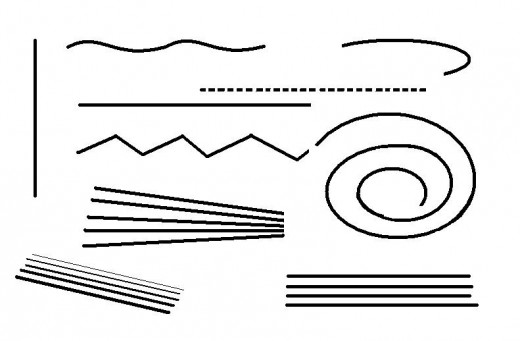
1. Line – A line is the path traced by the moving point of a pen, brush crayon, or any other instrument. Lines can be
· vertical
· wavy
· dotted
· horizontal
· zigzag
· diagonal
· converging
· parallel,
· thick or thin
· curved
Egyptian art especially hieroglyphs and wall reliefs can be described as ‘linear’ since they used the line element to the fullest degree.
The quality of the line is dependent on the tool used to make it. Lines may therefore appear to be rough, smooth, light or heavy. The colour used to make the line also contributes to the appearance. Black is likely to make a line look heavier than if it was drawn in a yellow colour.
2. Shape –this is an area that has been formed by one or more of the other elements. A shape can be defined by colour, line or even the space around it. In three-dimensional (3D) designs, a variety of materials such as wood and stone can be used to make shapes. Shapes may be open or closed, positive or negative. An example of negative shape is the cut -out in a stencil. In the case of a drawing, negative space is all that space that is not the dominant object. The sky for example is a negative space in a landscape. The hills in the distance and the trees in the foreground are the positive shapes.
Voids or holes in sculpture are also negatives. Shapes create forms, which can be described in the following manner.
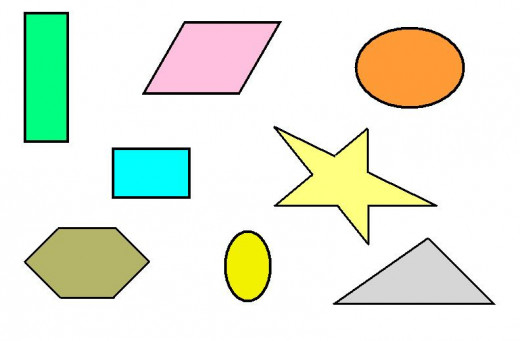
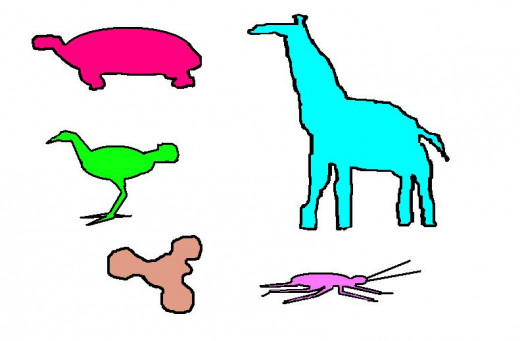
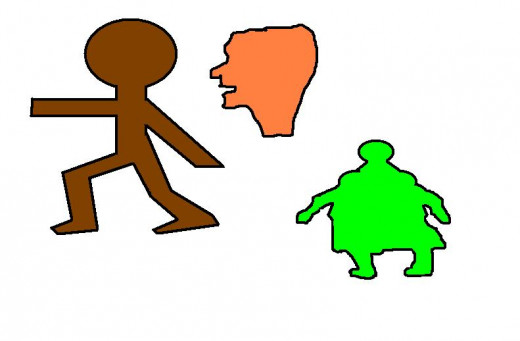
a) Regular shapes – these are geometrical like triangles, rectangles, squares, circles, ovals, hexagons trapezoids and other forms that can be made with geometric instruments.
b) Biomorphic or organic – These forms are irregular and may resemble biological organisms
c) Anthropomorphic – these forms give the impression of human beings. Images in Rock art usually have anthropomorphic forms to represent the hunters or herders.
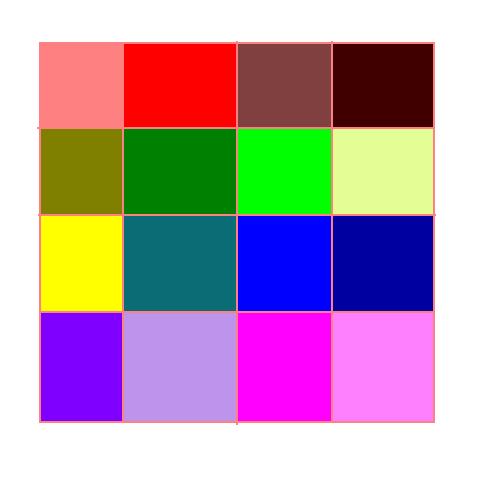
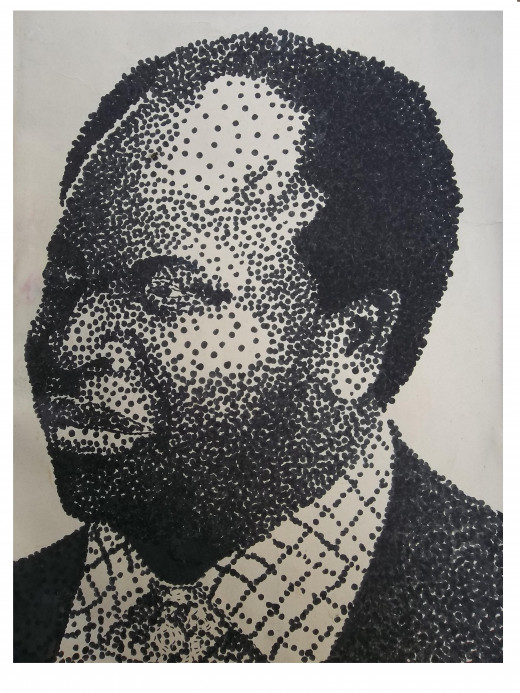
3. Form – A form may be a three dimensional object or the visual elements in an artwork’s composition. Individual forms such as the building in a landscape, the bottle in a still life or the windows in a building reside within the overall form. In other words the entire artwork is a form made up of numerous individual forms.
4. Light and colour - Colour is a product of light. The absence of light causes darkness. Artists use this interplay of light and dark as an element that enhances a work of art. This lightness or darkness in a picture is called ‘value.’ According to Adams (1999), when “electromagnetic energy of certain wavelengths…strikes the retina of the eye,” visual sensations are produced. These wavelengths vary to create sensations of colour.
The primary colours of the pigments used by artists are red, blue and yellow, which cannot be achieved by mixing any other two colours. A combination of any of these two primary colours produces a secondary colour. Works of art whose values are in a grey scale are called achromatic and those with a variety of colours are chromatic. A monochromatic work of art utilizes shades and tints of one colour – for example, a picture in red only uses white to create highlights and black to create shades. Black and white which are used for shading and tinting, are considered to be neutral.
Colours reflect light in differing intensities. Yellow reflects more than blue for example. According to Adams, the normal value of each colour indicates the amount of light it reflects at its maximum intensity.
Colour can evoke a sense of warmth or coldness. Red, orange and yellow evoke warmth. Purple, blue and green evoke a sense of are coolness perhaps because people associate blue with water, and green with lush grass. There are many associations with colour, some in opposition with each other. For example, red can be a sign of danger but it can also imply celebration like Valentines or even Christmas.
5. Texture -Texture is the quality of the surface as conveyed by the colour, lines or shapes on the work of art. When we look at a work of art, we see and feel the texture by imagining what it would be like to touch it. The texture can be rough, smooth, furry, wet or dry. This texture may be either the real surface such as a rough canvas, or an illusion created by the artist.
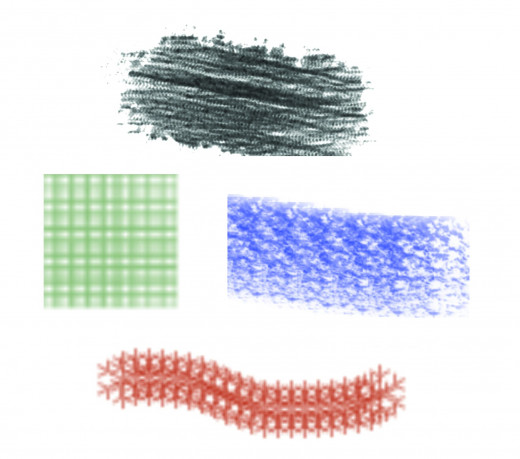
6. Plane – A plane is a flat surface with a direction in space. In a landscape, the foreground may be on one plane and the distant mountains on another plane. Other objects such as buildings and birds in flight may be organised in separate planes. A plane can also be defined as a two-dimensional shape in a relationship with three-dimensional objects
Conclusion
We have seen that Art is a universal language and can therefore be taught and learned like any other language. Granted, there will be differing levels of proficiency exhibited by individuals but each person can increase their knowledge and skill by continuous practice after first understanding the basic elements and principles. Without patrons, Art does not develop to a high degree. Those in power, the City councils and religious institutions among others should support artists and their work.
References
1. Adams, L. S., 1999, Art across Time, McGraw-Hill College, New York.
2. Janson, H. W., 1997, 5th edition, History of Art, Thames and Hudson, New York.
3. Mittler and Ragans, 1999, Exploring Art, Macgraw Hill.
4. Willet F.,African art: an introduction, 1971, Part
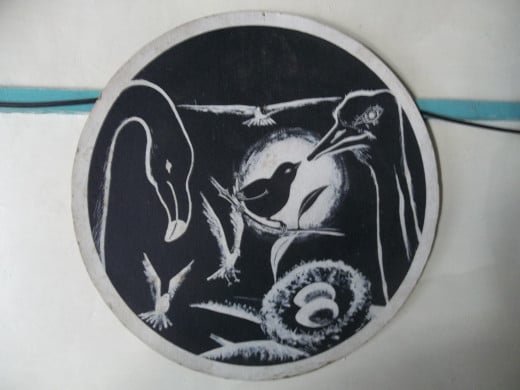
Some Art Exercises
EXERCISE 1
Study books with Rock Art. See how the humans and animals have been stylised. Create your own rock based on modern life.
EXERCISE 2
1. Dots are considered to be part of a line - actually the beginning of line. A dot is the most basic element.
Take a black pen and do a portrait entirely in dots. You may pick the picture from a newspaper, trace it and draw a grid. The darkest parts have the largest concentration of dots.
2. Do the same portrait in a lines only - Vertical lines. The darkest areas have the highest concentration of lines.
3. Do the same portrait in crossing lines (cross hatching)
4. Look for a building with at least three floors and reproduce it in pen and ink.
5. Arrange a still life and using any of the techniques above,use a brush to go over the darkest areas with a wash of ink mixed lightly in water
EXERCISE 3
Study Egyptian art and adopt the style to represent modern life. Note that in humans only one eye was shown.
EXERCISE 4
Note the saying that form follows function - Draw a kettle, a spoon a fork, a walking stick, a chair, frying pan, an umbrella, a shoe, and a bicycle. Describe how the form of the above items follows their function.
EXERCISE 5
1. A rrange a still life and paint it in full colour - Chromatic.
2. Compose a pictre and paint it in a monochromatic scheme. If you choose blue for instance, the dark areas will be blue plus black. The light areas will be blue plus white.
3. Pick the picture of a public figure in the newspaper and reproduce 2 times larger in colour
4. Use the same picture in 3 above and reproduce it in a monochrome
EXERCISE 6
Study different textures in nature - tree bark, orange peel, banana peel, coconut shell etc.
1. Arrange a still life that has some of these textures and draw them in pencil
2. Arrange a still life that has some of these textures and draw them in water colours or acrylics
EXERCISE 7
1. Go outdoors and draw a landscape. Note the various planes eg. Ground, sky, horizon and others in the middle ground. Be conscious of the planes as you draw the trees, houses etc. Things that are in a linear arrangement will be on their own plane.
2. Draw a closeup of a building in perspective - note the various planes
This content is accurate and true to the best of the author’s knowledge and is not meant to substitute for formal and individualized advice from a qualified professional.
© 2012 Emmanuel Kariuki




